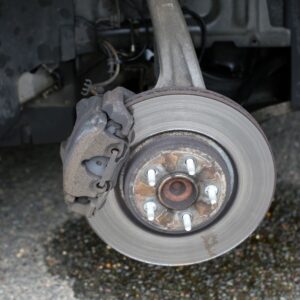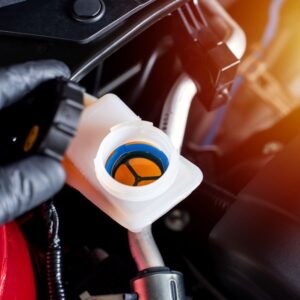Q: Where Is the Brake Fluid Typically Located?
A: Brake fluid does two things for your vehicle. First, it transmits force from the brake master cylinder to the brake calipers or brake shoes. Second, it protects the metal parts of the brake system. While brake fluid can be found throughout your brake system, you can check brake fluid levels in the master brake fluid reservoir.
The master brake fluid reservoir is usually found mounted on or near the firewall at the back of the engine compartment. If you can’t find it there, consult your vehicle’s manual.

The location of the brake fluid reservoir will of course depend on the make and model of your vehicle. However, some areas are more common than others.
For instance, the brake fluid reservoir in 2000-2004 Ford Focus vehicles is a white container on the right side of the engine bay close to the windshield.
Meanwhile, in 1998-2002 Honda Accords, you’ll find the brake fluid reservoir in the same spot, but it sits a little lower in the engine bay.

Tips on How to Access the Brake Fluid
Try not to open the master brake fluid reservoir cap if you can help it. Brake fluid can easily absorb the moisture in the air, which can impact its effectiveness. Most reservoirs will be semi-translucent, which allows you to check on the fluid’s color and its level without opening the cap.
Any information provided on this Website is for informational purposes only and is not intended to replace consultation with a professional mechanic. The accuracy and timeliness of the information may change from the time of publication.



























